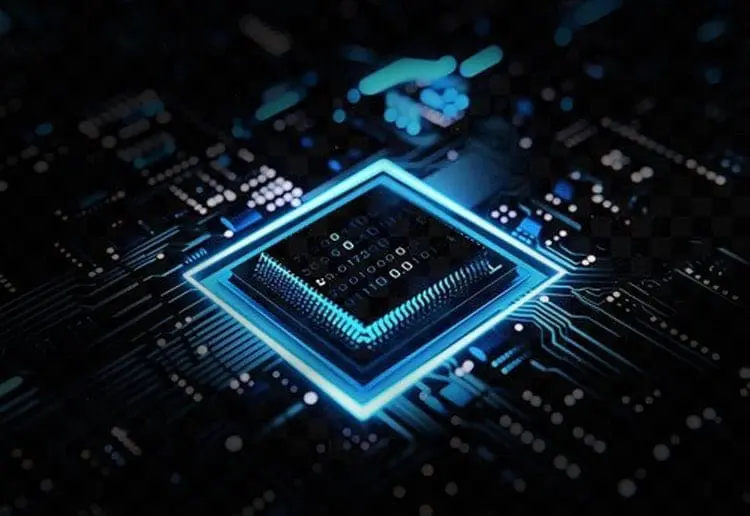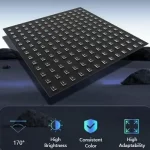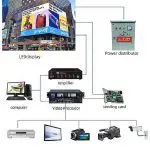
venkovní LED displej
Zavedení
Do roku 2025 LED displeje have evolved from static visual tools into dynamic, intelligent systems powered by artificial intelligence (AI). This fusion is driving unprecedented advancements in energy efficiency, user engagement, and operational workflows across industries. With the global AI-enabled LED display market projected to reach $12.8 billion by 2025 (Grand View Research), this article explores how AI is reshaping LED technology, backed by real-world applications, cutting-edge innovations, and actionable insights for businesses.
1. Core AI Innovations in LED Display Technology
1.1 Intelligent Brightness and Color Optimization
Modern LED displeje now leverage AI to dynamically adjust brightness and color in real time. Using ambient light sensors and machine learning algorithms, these systems optimize visibility while reducing energy consumption by up to 35%.
- Případová studie: Leyard’s smart city projects in Singapore deploy outdoor LED billboards that dim during low-traffic hours, slashing municipal energy costs by 25%.
- Technical Insight: NVIDIA’s edge AI chips enable localized dimming, achieving 1,000,000:1 contrast ratios on Sony’s Crystal LED screens for immersive gaming arenas.
1.2 AI-Driven Image Enhancement
AI overcomes traditional limitations of LED displeje, such as pixelation and color distortion. Generative adversarial networks (GANs) upscale low-resolution content to 8K/16K standards, while real-time HDR optimization adapts to scene dynamics.
- Industry Example: At ISE 2025, Absen unveiled AI-powered controllers that automatically sharpen and color-correct legacy media, ensuring compatibility with ultra-HD LED walls.
- Data Point: LG’s QNED screens reduce motion blur by 90% using AI frame interpolation, critical for sports and fast-paced advertising.
1.3 Predictive Maintenance and Fault Detection
AI minimizes downtime by predicting hardware failures before they occur. Machine learning models analyze temperature, voltage, and pixel performance to flag anomalies with 98% accuracy.
- Případová studie: Samsung’s Smart LED systems reduced downtime by 40% in stadium installations by alerting operators to degrading components.
- Innovation: Absen’s self-healing panels reroute signals around dead pixels, ensuring seamless visuals without manual intervention.
2. Elevating User Experience and Operational Efficiency
2.1 Personalized Content Delivery
AI transforms LED displeje into interactive platforms that tailor content to audience demographics. Facial recognition (with privacy compliance) and motion tracking enable hyper-targeted advertising.
- Retail Breakthrough: Unilumin’s Tokyo storefront screens boosted conversion rates by 35% by displaying promotions based on shopper age and gender.
- Event Application: At the 2025 Spring Festival Gala, AI-curated visuals synchronized with audience interactions, increasing engagement by 50%.
2.2 Integration with Smart Ecosystems
LED screens now serve as data hubs within IoT frameworks. For example:
- Smart Traffic Management: Leyard’s AI-enhanced screens in Shenzhen reduced peak-hour congestion by 20% by analyzing real-time traffic patterns.
- Environmental Monitoring: Unilumin’s “AI Fish Tank” screens combine entertainment with air quality tracking, reflecting shifts toward multifunctional public displays.
2.3 Cost-Effective AI Deployment
Lightweight AI models like DeepSeek have democratized access to smart LED solutions. Unlike GPU-heavy GPT systems, DeepSeek runs efficiently on $2,000 GPUs, enabling SMEs to adopt AI-driven displays.
- Případová studie: DreamParty Group uses DeepSeek-powered digital employees for 24/7 customer service, cutting operational costs by 60% in telecom sectors.
3. Real-World Applications of AI-Powered LED Display Screens
3.1 Smart Meeting Rooms
Unilumin’s AI meeting rooms automate workflows with voice recognition and gesture control. Features include:
- Auto-Framing: AI cameras track speakers and project optimized feeds onto wall-sized LED screens.
- Real-Time Summaries: GPT-5 integration generates meeting notes, cutting preparation time by 60%.
3.2 Public Infrastructure
- Smart Bus Stops: Shanghai’s AI-enhanced transparent LED screens provide weather updates, route optimization, and local service recommendations.
- Zdravotní péče: 4K medical-grade LED screens assist in remote surgeries, with AI adjusting brightness to reduce eye strain during 12-hour procedures.
3.3 Entertainment and Cultural IP
- Generative Art: At CES 2025, Refik Anadol’s AI-generated masterpieces were projected onto Absen’s 16K LED walls, blending art and technology.
- Virtual Influencers: China’s virtual human market, powered by AI models like LYDIA, is projected to hit $96 billion by 2025, with LED screens enabling lifelike interactions.
4. Future Trends Shaping the AI-LED Landscape
4.1 From Hardware to Ecosystem Dominance
Companies like Leyard and Unilumin now prioritize AI software integration over hardware specs. For example, Leyard’s “AI Canvas” platform lets users control global LED networks via natural language commands.
4.2 Ethical AI and Privacy Compliance
Stricter regulations (e.g., GDPR and China’s PIPL) mandate anonymized data usage in public LED advertising. Solutions like edge AI processing ensure facial recognition occurs locally, not on clouds.
4.3 Democratization of Creative Tools
Generative AI platforms like OpenAI’s Sora enable SMEs to produce real-time 3D content for curved, spherical, or fragmented LED installations at 1/10th the traditional cost.
Závěr
The synergy between AI and LED displeje marks a paradigm shift—from passive displays to intelligent partners that adapt, predict, and innovate. As industries adopt these technologies, businesses must prioritize collaborations with pioneers like Unilumin, Leyard, and Absen to harness AI’s full potential. With advancements in edge computing, generative AI, and ethical frameworks, the future of LED displays lies in seamless, sustainable, and human-centric innovation.













